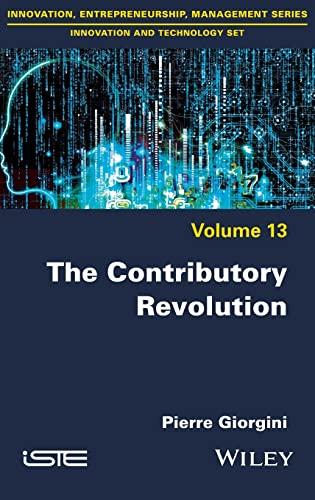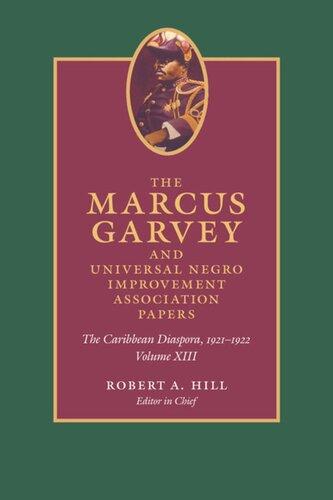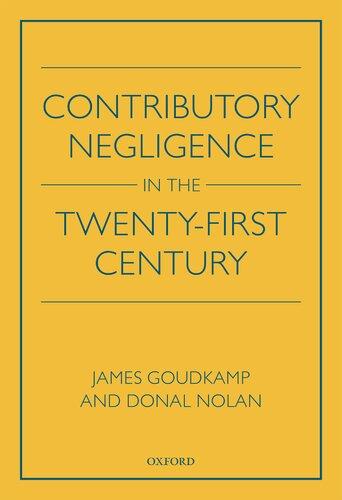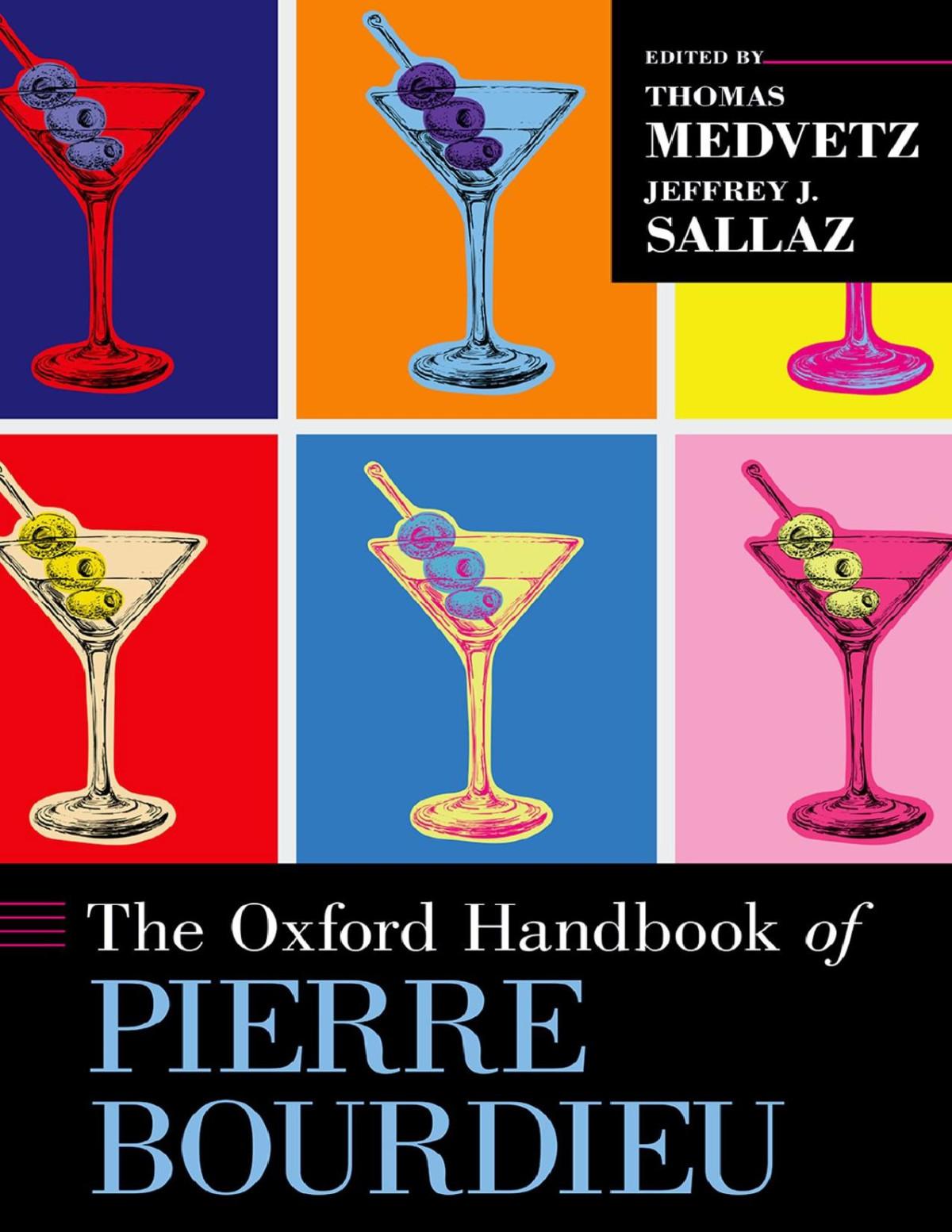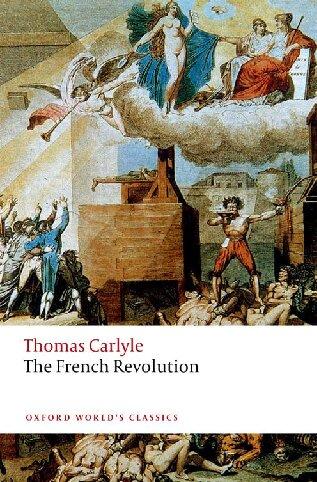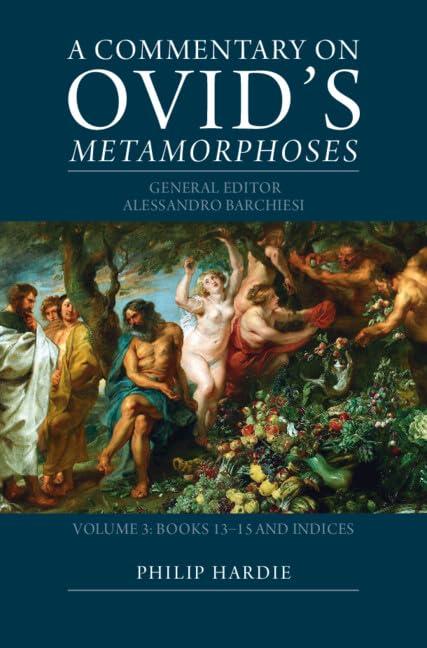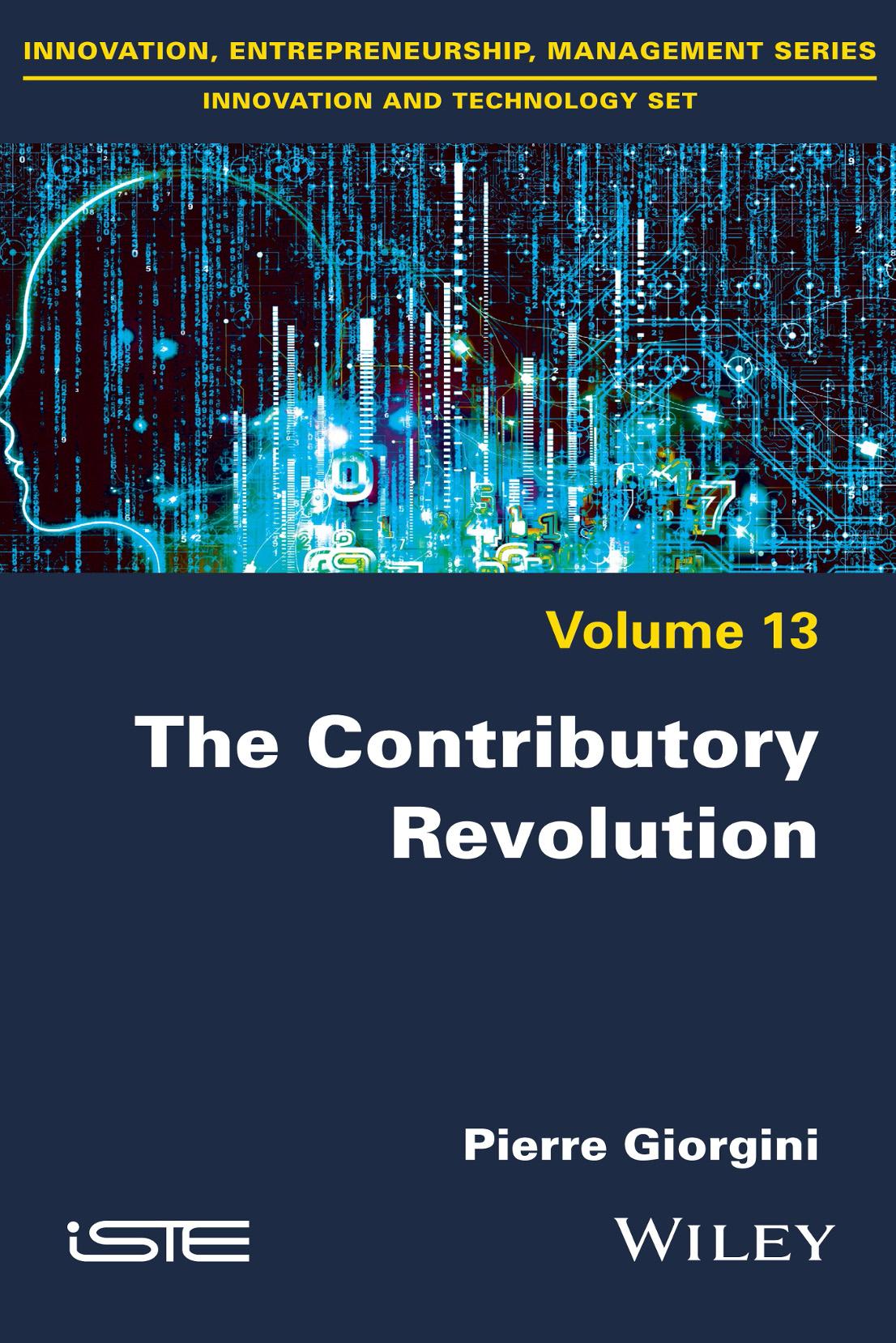Giorgini
Pierre
First published 2021 in Great Britain and the United States by ISTE Ltd and John Wiley & Sons, Inc.
Apart from any fair dealing for the purposes of research or private study, or criticism or review, as permitted under the Copyright, Designs and Patents Act 1988, this publication may only be reproduced, stored or transmitted, in any form or by any means, with the prior permission in writing of the publishers, or in the case of reprographic reproduction in accordance with the terms and licenses issued by the CLA. Enquiries concerning reproduction outside these terms should be sent to the publishers at the undermentioned address:
ISTE Ltd
John Wiley & Sons, Inc.
27-37 St George’s Road 111 River Street London SW19 4EU Hoboken, NJ 07030
UK USA
www.iste.co.uk
www.wiley.com
© ISTE Ltd 2021
The rights of Pierre Giorgini to be identified as the author of this work have been asserted by him in accordance with the Copyright, Designs and Patents Act 1988.
Library of Congress Control Number: 2021940536
British Library Cataloguing-in-Publication Data
A CIP record for this book is available from the British Library
ISBN 978-1-78630-724-8
Chapter 2. Science and Sense,
3.2.
3.3.
3.3.1.
3.3.2.
3.4.
3.4.2.
3.5.
3.5.1.
3.6.1.
3.7.
3.7.2.
3.7.3.
3.7.4.
3.8.
3.9.
3.10.
Chapter 4. The Contributory Metamorphosis of
4.1.
4.2.
4.3.
4.3.2.
4.4. The five stimulants of the “technological bluff” ..............
4.4.1. “Pseudo-humanist reductionism” is spreading and becoming dominant ................................
4.4.2. Distancing from collateral damage to nature ..............
4.4.3. The separation of use, design and the production of goods .....
4.4.4. Technology becomes an object of enjoyment in itself, and develops its own narrative, a true technomythology ...........
4.4.5. Value confused with price, in ideas of the market
4.5. The case of robotics and artificial intelligence ...............
4.5.1. Metaphor of pattern recognition to understand different artificial intelligence machines ...............................
4.5.2. Critique of the contemporary narrative of modernity relating to robotics derived from artificial intelligence
Chapter 5. The Salutary Crisis of Joy
5.1. The demolition of places ............................
5.2. The living world, an example to follow
5.3. A saving antidote to the general crisis of meaning .............
5.4. The path of complexity – ethics of organized complexity ........
5.5. Third places, co-elaborative spaces that integrate meaning ........ 171
5.6. Is an endo-contributive economy possible? (Human capital and full human development) .............................. 173
5.6.1. Rivalry or exclusion? Club property and common property ..... 173
5.6.2. From collectivity to community .....................
5.6.3. Fair or effective communities? ......................
5.6.4. The emergence of a contributory economy ...............
5.6.5. Human capital at the heart of the contributory economy ....... 179
5.7. Is endo-contributive energy possible? .................... 182
5.7.1. Towards the decentralization of electricity networks ......... 182
5.7.2. Smart grids? ................................. 183
5.7.3. Consum-actors for an endo-contributory management of networks? ..................................... 184
5.7.4. Blockchain: information and communication systems for peer-to-peer exchanges. A step towards an endo-contributive approach to energy? ...................................... 185
5.8. Is endo-contributive agriculture possible? .................. 187
5.9. Is endo-contributory technoscience possible? ................ 189
Foreword
It has been a great pleasure and honor to work with Pierre Giorgini and the Catholic University of Lille during his tenure. Pierre is not only a well-known and well-respected author on the subject of the contributing society, he is also a highly committed actor of this revolution, in particular in the pedagogical field. And it is this point that I would like to highlight in this Foreword.
Pierre has been a pioneer in both Hauts-de-France and Europe. He brought together the faculty and student body, and began to establish a roadmap for how they could transition the Catholic University of Lille into a fully operational Third Industrial Revolution smart digital infrastructure that would combine communication, renewable electricity, mobility and logistics in a single platform. It is an extraordinary accomplishment, but as far as I am concerned, what is equally interesting is his method for transforming pedagogy and curriculum.
The most important thing is how we rethink the mission of a university. Clearly, Pierre set up the infrastructure to rely on solar energy. The university now has a smart digital infrastructure, allowing the school to go off grid and be able to have zero marginal cost solar energy.
What is particularly interesting is that his accomplishment has come with a change in mindset. What he saw was the necessity of preparing young people for a more distributed, laterally scaled education which was more in line with the infrastructure that was installed.
The Contributory Revolution
For example, students at the Catholic University of Lille have increasingly learned in teams. And with these teams, each student has to take responsibility in sharing knowledge with each other as a collective experience.
Not only do students learn in teams where they teach each other, but this new approach to learning also encourages teachers to collaborate across disciplines, exposing students to interdisciplinary learning. Young people thus exercise complex and critical thinking so that they can begin to reason systemically. This approach to learning is distributed, laterally scaled and empowered, so that everybody participates and learns from each other.
And finally, students are encouraged to volunteer in the community, to share their skills with their neighbors and work alongside local businesses, non-profit organizations and governments. This approach breaks open the walls of the university and allows for an open relationship between students and their neighbors. There is no division between the school and the community. It becomes one learning community. These are extraordinary accomplishments.
We need more people like Pierre. Pierre’s contribution is already helping to change the approach to higher education in other regions of France, and hopefully in the future around the world.
Jeremy
RIFKIN
June 2021
Preface
My first two books, La transition fulgurante (“The Lightning Transition”) and La fulgurante recréation (“The Lightning Recreation”), describe the systemic upheaval we are experiencing on a global scale. The work comes after the combination of a powerful and large-scale technoscientific transition with the massive emergence of the interwoven and “co-elaborative” mode of conceiving cooperation within complex systems (technical and human). According to these two books, it is the source of a true anthropological revolution.
The third book, Au crépuscule des lieux (“At the Twilight of Places”), describes how this metamorphosis led to a generalized deconstruction of locality in the broad sense: the status of “taking place” in space and time, as well as psychological, symbolic and social place. It also shows how these deconstructions were generating, before our eyes, a quest for meaning, providing its own solution: the reconstruction of new places of meaning. These third places in the reinvention of the world were presented in this third work as well as in the fourth, published in 2020, La Crise de la joie (“The Crisis of Joy”), as a source of hope and joy.
However, I remained dissatisfied, because this demonstration remained centered on the analysis of the symptoms and did not focus enough on the epistemological sources of this upheaval. My question was then: “What underlying mutations in the process of building knowledge, particularly scientific knowledge, were underpinning this transformation?”
Jérôme Vignon, in the preface to La transition fulgurante, opened his remarks on the need to deal with this question by describing the upheaval in question as an epistemological revolution. Bertrand Vergely, in the preface to Au crépuscule des lieux, referred to Michel Foucault‘s (1966) “épistémè” to identify what he thought underlay my approach. The concept of episteme, according to Foucault, highlights the existence of a “frame of thought of an era”, which permeates the sciences as well as culture (philosophy, arts, lifestyles). This prompted me to approach, modestly and in part, the work of this great thinker. And the required effort led me to reread the concepts of my three works, going deeper into questioning the source of everything: “How is science developed as a cultural object?” Also, conversely, “How do the systemic upheavals of the world modify science and through it, the whole cultural field?” And, finally, “How far does the metamorphosis in such a development suggest a potentially beneficial approach to individual and collective learning?”
Then an image came to mind, that of a river flowing into a sea of joyful and renewed hope. It would be a question of identifying the topological displacement of its bed by coloring the water of its source in order to better describe the new path taken. Thus, my hope would be renewed and I would feel a sense and joy, feeling again able to identify what doing the right thing means “here and now”. Because the river, like life and the living world, is a single flow subject to the rules of time and also a timeless whole. The Jordan of the Bible is no longer quite the Jordan of today; however, it remains the Jordan because people, by naming it, have endowed it with much more than the sum of all its physical and chemical characteristics.
June 2021
Acknowledgments
I would like to thank those who, as debaters or editors, have made this publication possible, for their various contributions:
– Jeremy Rifkin for his Foreword and his support.
– Maël Montévil for our exchanges, his proofreading and all his remarks and conceptual enrichments, as well as his Postface. Maël Montévil is a researcher in organizational theory at the IRI.
– Stanislas Deprez for his proofreading and his contributions in the form of philosophical commentaries on the key ideas of each chapter. Stanislas Deprez is a philosopher and lecturer in philosophy.
– Paul Jorion, Nicolas Vaillant, Christophe Fachon and Benoit Robyns for their direct contributions (chapters). Paul Jorion is a professor and essayist, anthropologist and sociologist. Nicolas Vaillant is a research director and economist. Christophe Fachon is Director of the Institut supérieur d’agriculture de Lille. Benoit Robyns is a research director at JUINA Institute, a recognized specialist in smart grids, and the author of numerous books.
– Arnaud Devos for his expert guidance on quantum physics. Arnaud Devos is a CNRS researcher and a professor of microelectronics.
I would also like to thank:
– Yves Poulet for his critique of the chapter on “endo-contribution law”. Yves Poulet is a professor and researcher in digital law.
The Contributory Revolution
– Alain de Vulpian and Irène Dupoux-Coûturier for our numerous debates and our mutual enrichment following their reading of the successive versions. Alain de Vulpian is an anthropologist and Irène Dupoux-Coûturier is a historian and co-founder of SOL France.
– Thierry Magnin for his advice and proofreading. Thierry Magnin is a professor of physics, theologian and philosopher, and the author of numerous works on the ethics of science.
– Jean Pierre Rosa for his precise proofreading. Jean Pierre Rosa is a philosopher.
– Gerland Lees for his work on the translation of the text. Gerald Lees is a language consultant and translator.
Introduction
The digital revolution is systemic in nature. It is primarily epistemological, indeed gnoseological. It is bringing about a metamorphosis of science and technology as a cultural object. This metamorphosis is taking place at the heart of a fundamental duality of the human soul: the place/link duality. In addition, the new forms of potential released by science and technology are foundering on the ecological and anthropological challenges of their implementation. Perceived, according to one’s beliefs, either as salutary or apocalyptic, the outcome of the debate on the very nature of their development and their use is crucial today. It involves both a choice regarding the way of life and an orientation towards the continuation of our long process of humanization. It concerns the whole of humanity. All this contributes in the social and cultural field to a crisis of meaning and joy. This crisis, like any crisis in the living world, mobilizes forces for conservation against forces for alteration; against deconstruction, reconstruction emerges. The “third places” of this reconstruction are emerging everywhere. The levers of their effectiveness are known. It is up to us to activate them.
I.1. Tricky words relating to the transformation of the living world
Deconstruction, alteration, transformation and conservation are words often used to try to express what is transformed in the living world. The terms “alteration” and “conservation” are delicate. Alteration indicates a change in nature without there necessarily being “destruction”, which corresponds to another category, as mentioned in the work of Aristotle, for example.
Conservation poses another problem: the principles of conservation in physics assume that something precise is preserved, but for theoretical reasons, the living world never remains itself identical, and does not maintain anything without change. Conservation biology is interesting here. Historically, it was at first to conserve species, whereas today, it is rather to conserve biodiversity and the processes that produce it “globally”.
For example, biologists are worried in situations where the evolutionary process is disrupted, even if the populations concerned are not collapsing (for the moment). Would it perhaps be more apt to speak of the forces of destruction and the forces that oppose it (life as being that which opposes death)?
The philosopher Bertrand Vergely tackles somewhat similar subjects in La destruction du réel (Vergely 2018). He inspired me. He speaks of destruction and thereby introduces a form of irreversibility. I prefer to speak of deconstruction because deconstruction is part of the evolutionary dynamic of living things, and is not systematically bad news. However, this word is also unsatisfactory; deconstruction implies something methodical, a deconstruction that is piece by piece and associated with the idea of a reconstruction, possibly the same after repair, for example. More exact words would be demolition/construction. The living world is a huge DIY exercise of an endless series of partial or total demolitions and ongoing constructions, also partial or total. In fact, the two forces present in the living world, because they alone give it its intelligibility, are those of impermanence and permanence; we could also say the force of transformation compared to forces that oppose it, or even the force of alteration in relation to forces that oppose it; all altering the permanence of forms. With all the reservations expressed above, for the sake of simplification, we will keep the term conservation to designate the forces that oppose transformation or demolition.
The second reason these words are tricky is that they embed cultural value judgments. Innovation is considered rather positive in the contemporary world. Demolition is today rather negative although often it gives way to the new, the innovative. Deconstruction is more neutral; alteration is perceived more negatively With these remarks in mind, we will use in the rest of the text the following dualities: deconstruction versus construction, transformation versus conservation, alteration versus conservation or innovation versus conservation. We will, however,
remember that, each time, there is an overarching philosophical concept: impermanence versus permanence, consubstantial with the intelligibility of all living reality.
I.2. Wear, aging, disappearance: the inescapable fate of matter?
A field of forces for alteration from the depths of matter, then from the living world as a complex system, extends across the biosphere on every scale, from the nanometric level to the macroscopic: it is entropy. This is a system, in the sense of physical and biological systems. The term system has a broader meaning in philosophy, compatible with a real consideration of historicity (this thought has been eliminated from Santa Fe, but still exists at the Institute of Complex Systems). The term entropy, on the other hand, was introduced in 1865 by Rudolf Clausius. It characterizes the degree of disorganization or unpredictability of the information content of a system. It acts in depth, towards an increasing disorder of matter. The increase in entropy is due to the fact that a system always goes from a less probable situation to a more probable situation, and therefore towards the loss of the specifics of the earlier configuration. We can say that this often corresponds, intuitively, to a disorganization (which is not a physical concept) or to the loss of macroscopic patterns. However, this is not always the case. For those who want to look further into this complex and paradoxical concept of entropy, see the Appendix.
This field of alteration forces is therefore seen, for the living world, to oppose a counter-field of conservation forces which is anti-chaotic, adaptive and beneficial. This field of conservation forces is thus opposed everywhere and on every scale to the forces of alteration. The combination of the two produces a fruitful and wonderful co-fertilization, that of the appearance of ever more complex living things. Not all living things become more complex. Bacteria are doing well and are still relatively simple living things.
The overall complexity is always greater, always more beautiful and orderly in its interactions, always more resilient and diverse; it is called Life. According to Bailly–Longo–Montévil (Longo and Montévil 2012), this axis of increasing global complexity, very present in Teilhard de Chardin’s (1956) work, is due to an asymmetry in the random space of changes in complexity owing to the existence of a wall of minimum complexity allowing survival. The asymmetry induced by this wall results in a constant
growth of the average level of complexity due to the fact that more and more complex living things always appear, whereas the minimum is limited. In other words, the axis of increasing complexification is infinite, while that of increasing simplification has a minimum. Taken as a whole, the level of average or global complexity is constantly increasing.
However, this prodigious survival of the living world as a global system does not imply the conservation of each of its localities. Place can designate a geographical, ecological place, as well as a place in the organized space of living species, or even a particular organism. Each locality (species, organism, ecosystem) must adapt or disappear. It must never exceed the intrinsic limit of any dynamic and dissipative energy system, that of adapting slower than its environment is transformed. It is a transformation due to the combined effect of the given locality and all those that interact with it. So, the question becomes: can the human locality be preserved, and be preserved by a conservation mechanism? This is a very daunting question. It can be formulated differently by taking up the idea of Bernard Stiegler (2018), who designates the entropic effect induced by human activity anthropia (anthropos). The question then is: will we be able to stimulate sufficient anti-anthropia to divert just in time from this fatal path? The most effective anti-anthropia, some currents of thought in radical ecology claim, would be the disappearance of humans from the biosphere, and that may be what is happening. This thesis makes little sense, from both an ecological point of view and a philosophical one. On the ecological level, there would then no longer be maintenance of anthropic and anti-anthropic processes, which in the short term would be catastrophic since all human intervention limiting the toxicity of technological devices would disappear (I am thinking of nuclear power plants, chemicals, oil wells, etc.). Philosophically, what would be the point of saving a biosphere in which there would be no one left to be aware of it?
Conversely, I believe that the metamorphosis which could be “anthropo-salutary” comes from a transition which I will describe as an endo-contributive revolution (ENC). The global paradigm shift that underpins it seems unattainable, a battle lost in advance, some say. This generates, particularly in the West, a crisis of hope and meaning in a context dominated by ecological issues. This desperation continues to grow.
Either there will be a dynamic of adaptive learning on a global scale, sufficiently powerful and rapid, or else a catharsis of hatred, a return of
repressed violence, will overwhelm us. It will be fueled by the cumulative failures of States and institutions in the face of collapses of all sizes which are sure to occur in the fields of economy, ecology, health and society. It will then plunge us into revolutionary barbarity and war. This barbarity, favored by social networks guaranteeing the anonymity of exchanges and provoking a crisis in the language and ethics of argument, already shows signs of muted emergence, before, perhaps, we are able to migrate to a new alliance with nature, accompanied by a renewal of humanist and spiritual change.
I.3. Is a positive future accessible?
Among the different factors in the metamorphosis, we will therefore have to discern those which work towards the conservation of our humanization process and those which work towards its demolition without the possibility of reconstruction. The big dream of the Tofflers and then of the “internetophiles”, that of a general “de-massing” supported by technologies in favor of diversification and cultural hybridization, creating a rise in awareness of the challenges of the common good and of interdependence, is not yet here, even if the first weak signals are present and there is undeniable progress. The standardization required by technologies, including the most recent ones resulting from the development of artificial intelligence, for example, continue to standardize the human and direct them towards the numerically most probable situations, including in matters of consumption. We can thus speak of entropization leading inexorably to the death of systems. Maël Montévil speaks of a sterilization of human activities required for the convergence of the said activities with the algorithmic capacities of machines. Hannah Arendt already alerted us regarding language in The Human Condition (Arendt 1958). Basically, we are faced with a growing rejection of exo-distribution (EXD), which hierarchizes, and in all fields. In this, it is indeed a new episteme that is emerging.
It is high time that the adequate anti-entropy was invented at the heart of our socio-economic systems, as has existed in the living world for almost 4 billion years. We badly need it to stem the migration towards the maximum entropy of our biosphere and sociosphere. The concept of anti-entropy was introduced by Francis Bailly, Giuseppe Longo and Maêl Montévil (Stiegler and Montévil 2019) to resolve the incompleteness of the concept of negentropy (negative entropy) to characterize what happens in the living world. Indeed, entropic regulation allows it to keep organisms alive for a
given time and, thanks to reproduction, allows maintenance over a very long period of time as regards a species or a biological ecosystem.
Today, the most catastrophic scenarios based on the theory of a general and concomitant collapse (climate, ecological, demographic, financial, in petroleum, etc.) are blossoming, and supposed to result in a sudden global collapse (Diamond 2005; Servigne and Stevens 2015). However, the majority of the world scientific community refutes this thesis in favor of a succession of various collapses more localized in time and space, whose point of irreversibility, depending on their nature, would be around 2050. It is no less catastrophic but subject to a certain progression.
However, I put forward the idea that the consubstantial learning capacity of the living world generates before our eyes a contributory metamorphosis which may lead us towards socio-cultural and socio-organizational structures similar to those that emerged from the evolution of the living world which has met the theoretically impossible challenge of entropy. To reiterate, all matter tends towards a constantly increasing entropy which constitutes at the nanometric level a migration towards the most probable quantum configuration. It is inexorably subject, as a system, to increasing disorder, to a potential, which by dissipation of energy within the system, leads to its disappearance as an organized system from the point of view of its ordered complexity. This is what we call in everyday language natural wear or aging. However, we have seen previously that this link between entropy and disorder must be handled with care depending on the scale on which we are. Indeed, crystallization by glaciation, for example, is indeed a migration towards a structure that is very organized on the molecular level as well as reduced to nothing in terms of any vital activity of a biological system. Thus, complexity is not synonymous with disorganization or disorder. The biosphere has endured for over 4 billion years, from the appearance of the first living organism, presumably a prokaryote reminiscent of current bacteria, to the present day.
An impossible challenge has therefore been taken up by the biosphere. As stated, it has survived 4 billion years and has never irreversibly and fatally challenged the whole planet’s energy balance. At this point, we may stop for a moment. Indeed, it is evident that during these 4 billion years, collapses occurred leading to the brutal and global extinction of species or families of species. The best-known case is that of dinosaurs 65 million years ago, as well as that of large mammals.
From this perspective, global warming could lead to the end of the human species and of a large number of insect and mammal species, which would constitute an “intelligent” way for the biosphere to avoid the global and total extinction of the living world, i.e. itself. This scenario of the total extinction of the biosphere is almost impossible. For example, there are already organisms that manage to use the energy of the Chernobyl radiation for their growth. But to expect it, or even to resign oneself to it, is a selfish insult to future generations. I think of this when I look into the eyes of my granddaughters and when I imagine them looking into those of their progeny, and so on. “Time is greater than space” (Pope Francis). It is therefore a question of looking rather at how the “living system” as a whole has managed and organized its conservation forces in the face of the forces of alteration, its anti-entropy in the face of entropy, its anti-chaos in the face of the inevitable chaos of complex systems over time. It is a question of being inspired by it in order to allow the global living system, including humanity, to preserve itself in a healthy continuation of its process of humanization.
I.4. Is the search for a new alliance with nature driven by the crisis of meaning?
Three centuries of unrivaled dominance by the coupling of mathematics and physics at the heart of the classical scientific revolution (Newtonian physics) led to a large-scale cultural, civilizational and philosophical revolution. But overall, the third millennium will be quantum and biological or it will be nothing. It will proceed from a science of the complex where everything is connected, and be governed by infinite precaution, the alliance with nature and the end of mechanistic and reductionist vision, faced with the quantum mystery. For the living world is an immense patchwork, a tangle of organized, ordered complexities, synchronous and asynchronous ecorithms (Valiant 2013). It is irreducible, because any attempt to define a locality based on a formal construction which characterizes it immediately encounters the influence of the non-local or, on the nanometric scale, the quantum mystery where everything is connected to it.
And what if it were enough to listen to the living world? If we look closely, these structures mimicking the living world emerge everywhere as forms of imperfect responses, a patchwork yet promising in their capacity to regenerate meaning and hope. Thus, this bio-mimicry of the systemic
organizations of the living world towards which we would migrate would be a solution emerging from within the living world. And this would apply not only for our models of human interworking, our social organizations, but also for the technological object itself, which could enter a new era, that of the alliance with nature rather than its exploitation without limits and its outright reduction for our own ends. It is about mimicking nature (biomimicry) and developing with it contributory, lasting and regenerative “complicities”, including a reinvention of technosciences as a cultural object.
I.5. An unavoidable gamble?
Thus, I believe that because of the general crisis of meaning which we are experiencing, a learning mechanism consubstantial with the living world is engaged. Will it be powerful enough and fast enough to stem a scenario of even gradual general collapse, or at least limit its disastrous impact? This debate is crucial, because faced with a general rise in theories of global collapse, we see that several attitudes are emerging. The first, most extreme, is to prepare to survive individually or in small communities in a context of general chaos. These are the survivalists, with the most extreme among them going so far as to arm themselves heavily in order to resist potential “barbarian” invasions.
Another attitude consists of trying to amplify and accelerate, in a technoscientific effort without limits, based on a form of techno-worship, a radical technical response to the ecological and climatic challenges, problems arising moreover largely through the technosciences themselves. But in this scenario, the solution would make the problem worse. Some are geo-engineering projects such as the dispersion of diamond powder in the atmosphere; others involve the transformation of humans into post-humans adapted to radically degraded or modified living conditions (temperature, drought, polluted atmosphere, etc.), the implementation of palliative solutions to the rise in sea levels, gigantic dykes, and to the shortages of drinking water by means of the desalination of sea water, overpopulation by means of the “culture” of artificial proteins, etc. I have largely challenged this approach in La tentation d’Eugénie (Giorgini 2017).
Voices are also being raised, in part against optimistic environmentalists or at least those who still believe that a reversal of the trend is possible, as
they are accused of slowing down the development of preventive solutions to limit the inevitable impacts.
Don’t be alarmed: it’s a catastrophe! Too late! By suggesting that we can still correct the trajectory of our industrial civilization, the alarmist approach is 40 years behind the game. From now on, only “catastrophism” and the search for the least evil still make sense1.
Yet to expect the imminent end of the humanized world as inevitable is to organize it somewhere in our consciences. Worse still, promoting the hypothesis as a lever for one’s own success as an author or pseudo-scientist here and now is a crime committed in the name of so-called clear thinking yet subject to incompleteness, to uncertainty, possible change of direction, possible positive chaos. So we must warn about such a hypothesis while also counting on the strength of the living world, and on the genius of Men so often tested in the past; in a word, believe in Man, love Man and life. “All the analyses and studies tell us that what we want to do is impossible. As a result, we only have one thing left to do: to do it.”2
I.6. A technoscience to be reinvented?
The point where to place the cursor in matters of investment and technoscientific research, between a return to practices of less technical intensity, resulting from a radically innovative technology because it will be more frugal, more resilient, or on the contrary, a radical acceleration consisting of doing even more of the same thing, increasing the intensity and technological dependence of our societies, is an essential question for the future. The first scenario implies a collective capacity to define that which we want to preserve, which cannot be reduced by technology, and to which we wish to confer value. “Impossible, as long as we confuse price and value in a market economy without ethical regulation other than individual behavior subjected to technological, economic and State domination,” says Paul Jorion (Giorgini 2018). The second scenario relies on an excessive confidence in technology to save the world, in other words, to solve more
1 Cochet, Y. (2018). Tribune de Yves Cochet – Socialter 2020, special issue, December. Yves Cochet is the former Minister of the Environment of France.
2 The words of the French industrialist, Pierre-Georges Latécoère, written on a commemorative plaque at 79 Bis, Avenue Marceau, Paris.
problems than it creates. “Impossible!” Ellul (2003) tells us. The recursive aspect of a life-saving technoscience pushed to the limits induces, in return, a standardization of human behaviors in the sense of conformity to the models mastered by technical development which then become essential, including to resolve its negative externalities. A general cut in telecommunication networks today would lead to millions of deaths, whereas it did not exist two centuries ago. But at the same time, they save lives that would not have been saved at that time (ambulance services and so on).
I.7. General argument of the work
First, we will describe the extent to which the place/link duality, that which contrasts the “localized” with the “non-localized”, the continuous with the discontinuous, the located with the diffuse and the fully connected, haunts the deepest human thought since thought began, from Greek philosophers to Cartesian dualism, from quantum physics to complex higher order social systems. We will approach this duality from different points of view starting from the wave/corpuscle duality of matter at its most intimate level. It is at this point interesting to recall that non-locality in quantum physics is the observation that two quanta of matter whose origin is linked remain connected instantaneously in their behavior throughout their life, whatever in theory the distance that separates them. They constitute a single object even if an infinite distance separates them.
Second, we will document a subject which is crucial in any attempt to debate the appropriate scientific and philosophical approach to meet the challenges to come. How can we envisage and conceive of the role of science and technology in fully solving the considerable, and seemingly simultaneous, unprecedented challenges which our global human society must face? This question underlies today all debates on the ethical, political and geopolitical level. To answer it, the key questions asked will be: “Is a new scientific monism or a radical neo-positivism of the infinite complexity of systems possible?” “And if so, will it lead, as often in the past, to new models for technological mastery of the energy, ecological and socio-economic challenges that confront us?” A positive answer to the first question (scientific monism) is a necessary condition for a positive answer to the second question, but not sufficient. New mathematical models may perhaps lead to a unified conception of everything, from Newtonian physics
to consciousness through quantum physics, biology and the evolution of living things, neuroscience, psychology and the theory of consciousness, without leading to truly influential technological solutions and above all without irreversible risks to the evolution of the global system (however, the dream of grand unification of the theory of everything seems thwarted).
This reminds me of the sparkling and enthusiastic look of my physics teacher at college who had offered, in an optional course, to unfold the whole of field and particle physics from the four Maxwell equations. I had been there five evenings in a row, and what struck me was how jubilant he was, almost enjoying his complex constructions from a small core of basic equations. He had a feeling of power. The myth of the single equation is a fundamental of the desire for knowledge, the only God of the physicist. A myth that we need to dream while wanting it never to end in this world, because reaching it would mark the end of the so-called exact sciences.
I use the expression “unified scientific conception of the whole” here, and not “unified theory of the whole”, because the latter is a somewhat delicate expression. It only refers to the unification of quantum physics and relativity (and therefore of the fundamental forces). A priori, this would not lead, for example, to any progress for thermodynamics far from equilibrium (and a fortiori the living world, or consciousness). However, for reductionist materialists, the rest follows in principle. It can also be a horizon, but it is much more distant. There is nothing concrete able to achieve this today. A slightly different point of view is to say that we could approach everything in the same frame of thought, a common conceptual framework with the same tools.
This question deserves to be asked, because we know that the crisis is global and a series of global and irreversible technoscientific solutions, implemented without risk, would come from understanding and mastering the “System” as a whole: spatial, astrophysical, physical, biological, ecological, sociological, economic, etc., and above all, temporal, its evolution over time. Chaos theory has shown that a negligible uncertainty in the initial conditions of a deterministic evolution equation can grow exponentially over time and lead to a very great uncertainty at the end of a given time (butterfly effect). For example, we know that the chaotic aspect of the Earth’s trajectory is today completely negligible, and even more so on the scale of the galaxy, but it becomes non-negligible in the gravitation equations in 5 million years’ time.
This then implies questions that concern all sciences at once and especially their systemic interrelations. It follows that the emergence of an assortment of solutions without fatal irreversible risks could only be supported by a unified scientific model. This would require both filling the theoretical gaps of science in the change of scale (e.g. mega/macro/nano) and erasing the epistemological borders between sciences (e.g. physics/ biology or neurosciences/psychology or biology/sociology), as well as the sources of uncertainty intrinsic to the sciences themselves, in the complex game between what Bailly and Longo (2011) call the principles of mathematical construction (mathematical models or mathematical semantics) and the principles of proof (mathematical syntax or proof by measurement and experiment in physics). This is without forgetting, of course, a consubstantial indeterminacy of matter on a quantum scale.
These sources of uncertainty are, for example, incompleteness, unpredictability, undecidability, quantum decoherence, etc. – concepts that will need to be clarified further in this book, I would say, above all, of a-certainty stemming from the subject/object interaction in the very conception of the scientific approach. I will distinguish here between uncertainty and a-certainty: uncertainty accepts the fact that there is approximation in the result, but that, disregarding this approximation, the result can be certain, i.e. reproducible, supported by a theory complete with its experimental, causal and autonomous dimension (isolable from the rest), while a-certainty refers to the idea that there is no certainty about the theory and its application.
Once a well-founded position has been asserted on this issue of technoscientific mastery, the objective of this book will be to highlight a learning dynamic at work in our socio-technical systems aligned with the learning dynamic of the living world and to describe the levers that would promote their triumph without irreversible risks.
All in all, this book sheds light on a crucial debate on the possible role of technosciences and tries to show that the contributory revolution under way is global and profound, and that it concerns the whole epistemological field, from the sciences to social organizations (episteme). Its objective is to dive into the epistemological dimension of the lightning transition that we are experiencing, in order to identify the levers of the salutary acceleration of collective learning, which has become essential, once the debate is settled about a possible future based on a headlong technoscientific rush forward
(trans-humanism, geo-engineering, eugenics, mastery of evolution, etc.). However, after this call to move from an exo-distributive technoscience based on deterministic and Newtonian models, to more biological and endo-contributory models, or even from arrogant mastery to humble influence and alliance, its limits will have to be fixed to avoid entering into an eco-philosophical radicalism which would in turn come to oppose our humanization process. Only extreme humility, supported by strong spirituality, can preserve us from it.
The animal condition, the human condition, the divine condition: we observe a move to extremes. Unlimited human pride can only be countered by unlimited humility born of the spirit (Manent 2019).
I.8. Style and general structure of the work
I will probably never know why, although originally an engineer and mathematician, I have never been able to come to terms with linear, deductive thinking. I feel as if I am locked in there, as if the need to have the destination point, in order to draw the shortest line of reasoning, bothered me. For me, it is a condition that is too restrictive, not speculative enough. Still, throughout my four previous essays, I tried to define my objective first and then develop my reasoning as a flawless argument. However, each time I developed it, the network of argument nodes led me to new speculative links, impossible to control. The matter of knowledge is incredibly alive; it is complex, and submits us, like the living world, to unpredictable disruptions, to sensitivities to the initial conditions of reasoning which, when we simply seek to be serious, shatter many claims that we believe to be true. The beliefs are there, lurking in the corners of all science, of any supposedly certain evolutionary equation. They prevent us from seeing, or compel us to see only what we believe, despite the most rigorous formal reasoning. Faults appear, and they lead me into changes of direction which constantly transform the final objective, which should end with “Therefore…”, or “Consequently I can state that…”. I only know how to proceed in a circular fashion, but at each pass, my thinking becomes more refined, with more moderation, more nuance, more “maybe”. It distorts the trajectory of the writing, at the same time as the contours of the conclusion.
So, this book will not escape what is now a style that many reproach me for and consider a limitation. But there it is. Though an engineer, I could
never read a plan, and follow it step by step. It is the same thing when I assemble a piece of IKEA furniture. In fact, I have always been more attracted by the method of certain painters of my acquaintance, who work in layers, without really having a model, without a precise sketch of what they want to achieve. They paint a background, then another layer of background, reworking the first background if necessary, add another layer and so on, and finally the finishing touches. The canvas does not appear in its overall meaning until the last detail is finished, small and discreet as it may be. It is like a sentence that only makes sense at its final point.
There may be a feeling of repetition, but each time the argument will be refined. At each layer, each of the shapes will be defined by the definition they lend to others. It is, in some way, a circular system of writing.
